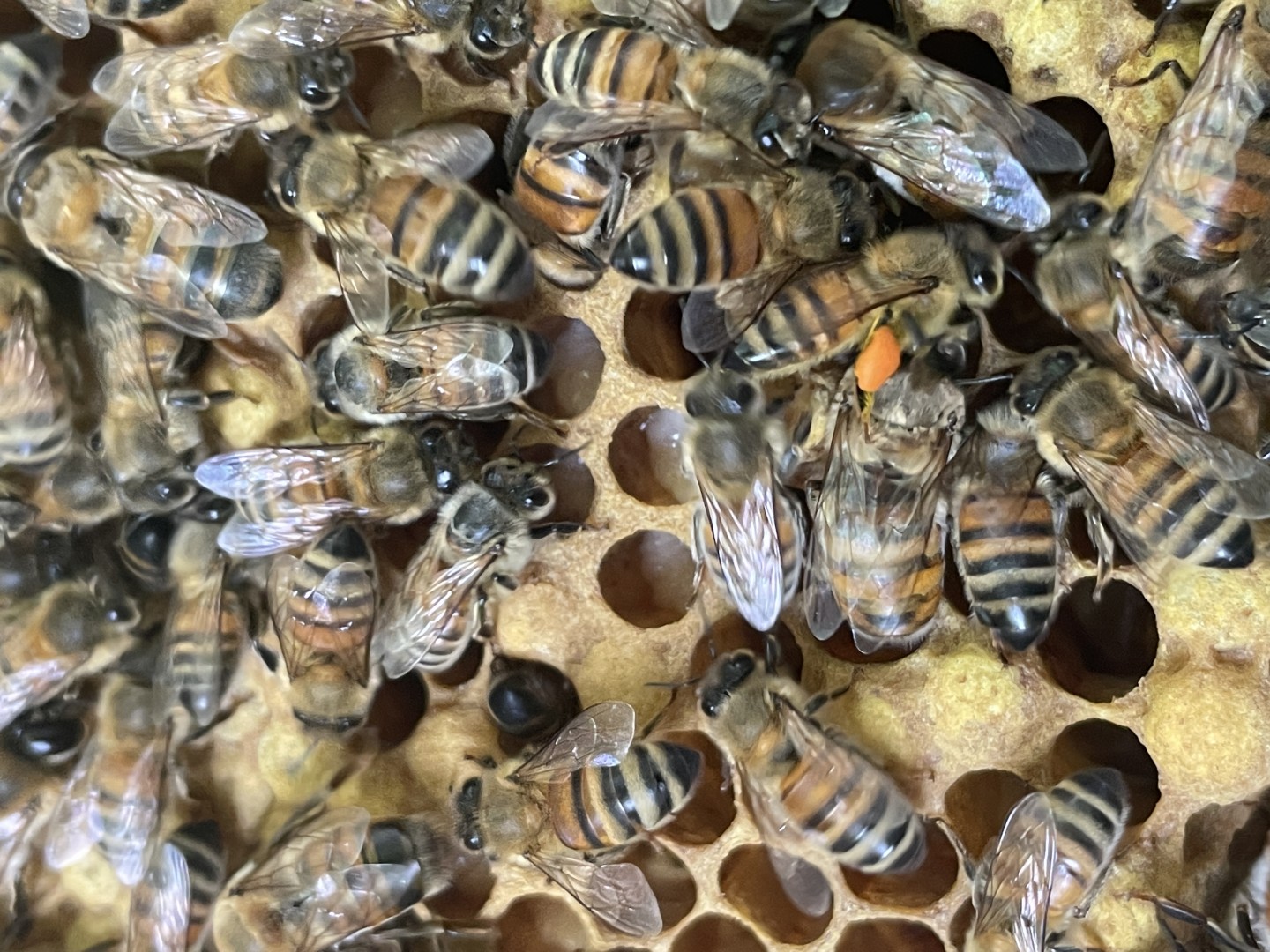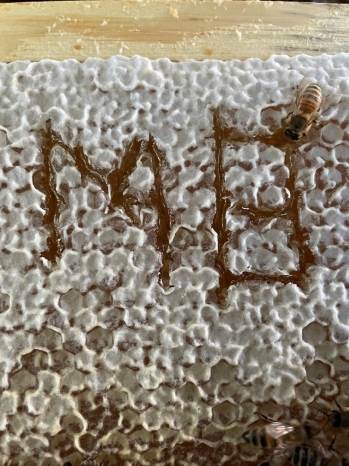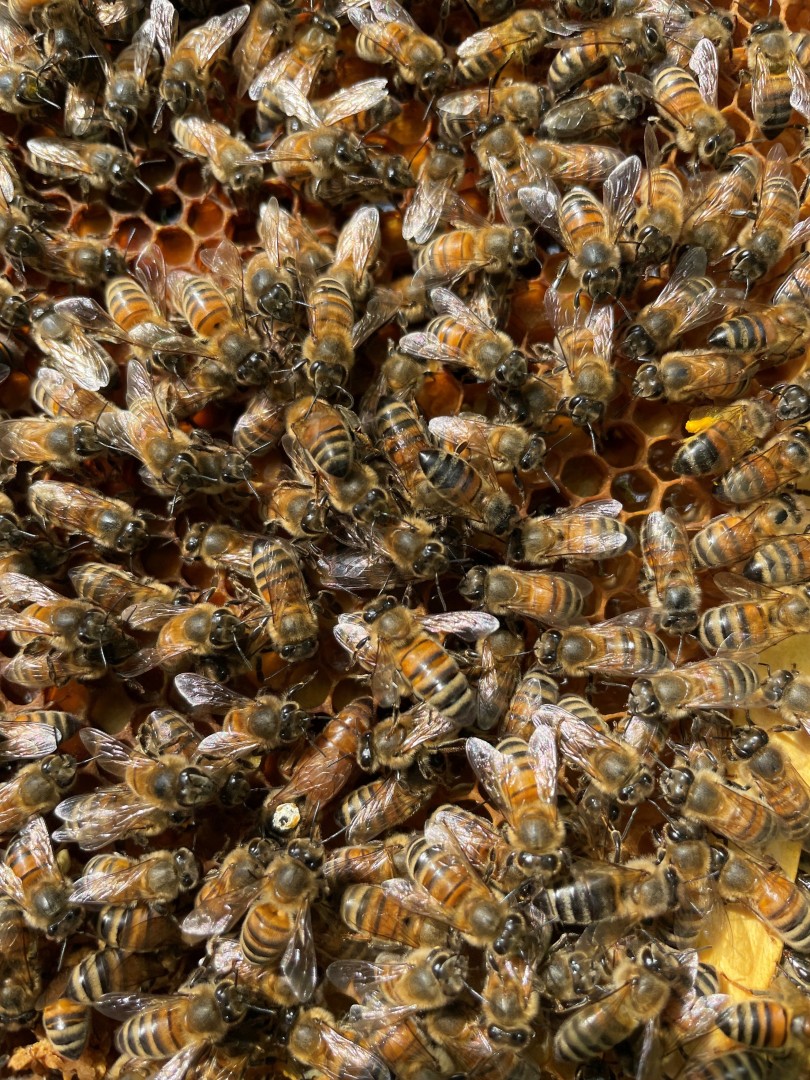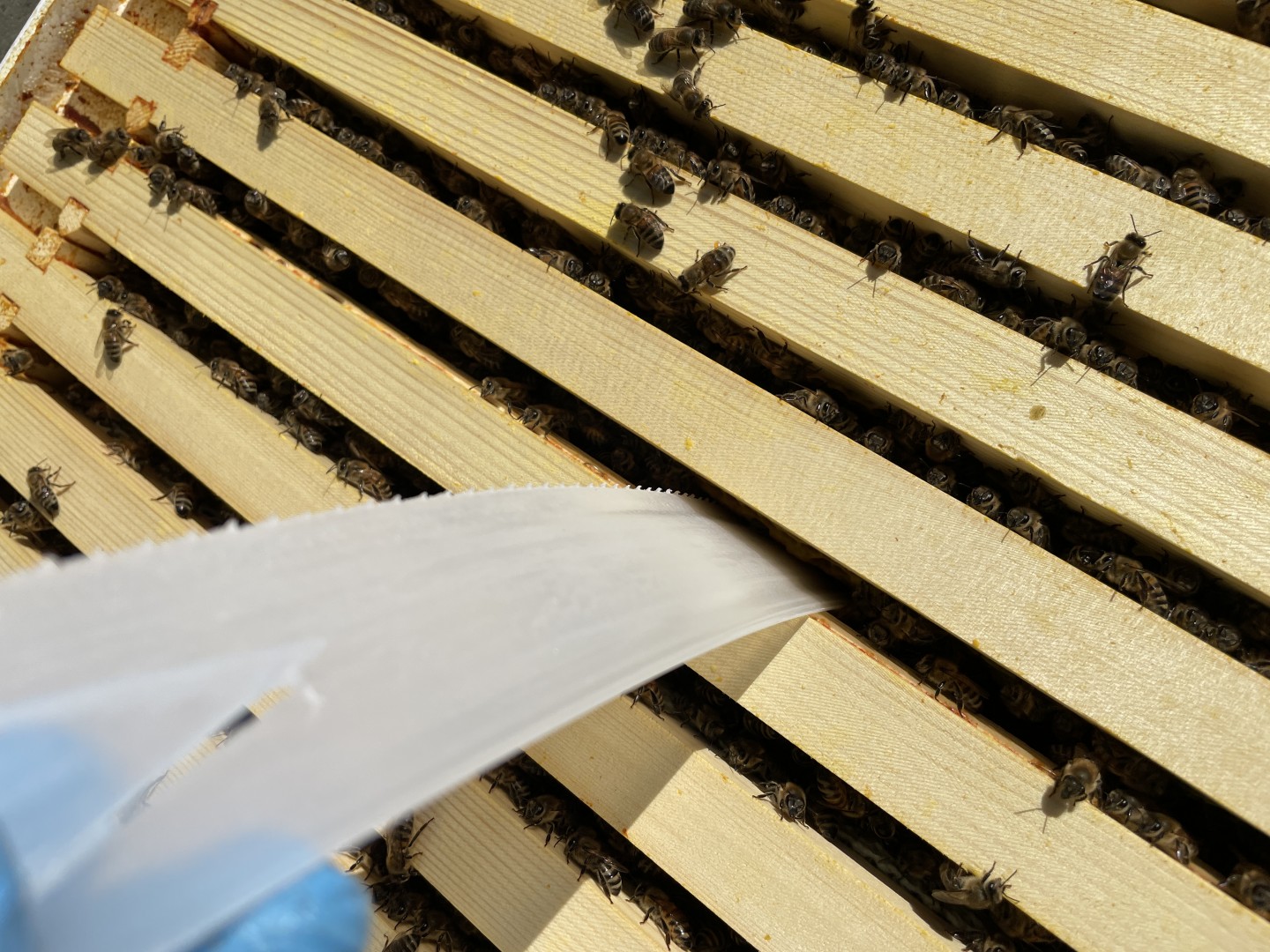May 20th is World Bee Day!
To raise awareness of the importance of pollinators, the threats they face and their contribution to sustainable development, the UN designated 20 May as World Bee Day.
In March 2022, we adopted a bee hive at SW Honey Farms.
We love Sussex and want to help keep it beautiful and green by supporting our honey-bees.
Bee keeper Stuart Weekes has provided regular updates on the hive's activity - read on to find out more.
March 2022
"I managed to go into the hives briefly and get a look at how they are progressing and how busy the queen has been at laying her eggs and building up the colony. So far, your hive is building great and will be needing their first honey box soon to be able to give them space. You will see at the entrance of the hive some bees who came to say hello!
As soon as the weather warms up a bit more, I will be able to fully go through the hives and send some more information and photos!
April 2022
"Weekly inspections have now started, meaning every week I go into the hives and have to check the state of the hive and make sure they have enough space. With the high number of hives I have to go through, this usually means I have to do this as quickly and efficiently as possible, but every now and then I get to take a breather and enjoy the job at hand. When I opened your hive, I saw the queen bee! The queen lays up to 1000-2000 eggs per day this time of year and she has been very busy doing just that. She is fed a very protein rich substance called royal jelly which keeps her laying eggs and her queen pheromone strong.
So far your hive is progressing very well. I have added a honey super - a box that is placed on top of the brood chamber where the bees store the honey, meaning they will have space to move. They have already started to fill the combs with honey and another one will be needed before long just to give the bees more space! The queen bee is surrounded by her attendant bees who feed and look after her.

June 2022
"The bee farm has been very busy. The bees have been hard at work bringing in loads of nectar and pollen. The spring honey flow has now ended and extraction is in full swing so your honey should be ready very soon! Here's a picture to show a frame of honey with MB on - so I know it’s your honey. This is then taken from the hive, uncapped and spun from the frames using a honey spinner. The honey is then put into buckets and stored until all hives have been extracted. It’s then poured into a bottling tank, jarred and labelled ready to be shipped to you! The spring nectar this year seems to be from horse chestnut, oil seed rape and cherry where there are loads near the apiary where your hive is located.
Now the spring honey is off and swarming has come to an end (hopefully), I can now look forward to the summer honey flow.

August 2022
"The MWB hive is currently working tirelessly to bring in honey from wild summer flowers. From looking at the pollens coming into the hive, the main source for this year's summer honey is from blackberry, lime trees and sweet chestnut. The blackberry pollen is a greyish green colour whereas the lime is a bright vibrant orange colour seen in the picture attached.
Not only are they collecting the honey and pollen, they are also pollinating millions of flowers in the process which is what these adoptions are all about. For your 4 jars of honey to have been collected, the bees have visited around 4,000,000 flowers and pollinated them in the process. They will be working these wildflowers until the middle of August where the next round of honey extraction will begin!

October 2022
"The honey crop for this year has ended and summer honey extraction is now coming to an end. The MWB hive has performed amazingly this season and the bees are now preparing themselves ready for winter. My job now is to ensure they have enough food stores and have been treated for a pest known as the varroa mite.
When the summer honey has been removed, they are fed a solution of sugar syrup (if they need it) to top them up to a satisfactory weight. They are also given a treatment known as Apivar. This is a miticide strip that when added kills varroa before they can attack the bees. What the varroa mite does is attach itself to the bee’s thorax and drain its life. These strips can only go in once the honey has been removed so it does not taint the honey. They are then left in for 6 weeks where I will then take them out, do a check on food weights again and then they are ready for the winter. I check them periodically for food weights as starvation can happen in the winter so it's always a good option to have food at hand whenever I do an apiary visit.

In the picture, you can see the strips that are used being placed into your hive. These strips need to be on either side of the brood nest to ensure maximum exposure. Your spring honey should have been sent to you and your summer honey will be coming soon. Once I've finished extracting all the summer honey, I will then be putting it into jars and sent out to you!"
March 2023
"As the weather will soon start to warm up, the bees in their hive are getting busy preparing for the arrival of spring. Here's a glimpse of what they do to ensure their survival and productivity during the upcoming season.
First and foremost, the bees start to clean the hive. They remove any dead bees, debris, and waste from the previous months, which helps maintain a hygienic living environment. They also start to repair and rebuild any damaged parts of the hive to make sure it's strong and sturdy.
Next, the bees start to produce more brood. The queen bee lays more eggs, and the workers start to feed the larvae to ensure they grow strong and healthy. This is crucial because the new generation of bees will be responsible for pollinating flowers and producing honey during the upcoming season.
As the temperatures rise, the bees start to venture out of the hive to gather food. They fly long distances to collect nectar and pollen from flowers, which they bring back to the hive to store for later use. This is essential because the bees need to build up their honey stores to survive during periods of scarce food in the future. This usually happens around June time and is called "the June gap"
Finally, the bees start to swarm. This is when a new queen bee is born, and the old queen bee and a portion of the worker bees leave the hive to establish a new colony. Swarming usually occurs in early spring when there's an abundance of food and good weather. This is stopped by me, the beekeeper, to keep the original queen in the hive and I do what is called a weekly inspection. Inspections are done weekly because this is the life cycle of a queen cell and they can be destroyed before a wax cap is put on which is when the bees will decide to swarm. Without a queen cell left in the hive they will not swarm (unless one is missed!)" - Stuart Weekes.
On the 27th of March it was year since we first adopted our hive!
Here are some statistics to show just how much of an impact adopting a beehive has had in the first year.
- The queen in your hive has produced between 100,000 - 200,000 honey bees this year.
- The maximum number of honey bees in the hive at one time this year was around 80,000 bees!
- The amount of flowers that were pollinated based on the amount of honey produced are around 130 million flowers! This is an incredible number and all because you helped support the adoption program.
- Your hive also contributed to creating a new colony of bees. This is called splitting and the process is taking 2 frames of brood and a frame of food. They are then moved over 3 miles away so the flying bees do not fly back to their original hive location and a new queen is introduced. They are then fed and will be a full working colony ready for this coming season!
It's lovely getting news about the MWBees and this year we will get to name our hive’s queen!
We will keep you updated!
